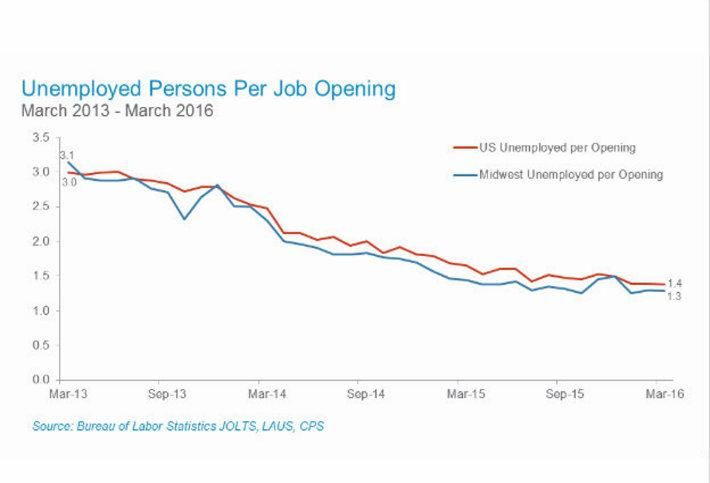High Quits Rate A Sign Of Health In The Midwest
Yesterday, the Bureau of Labor Statistics (BLS) released March 2016 figures from its Job Openings & Labor Turnover Survey (JOLTS), which follows job openings, hires and separations (quits, layoffs and discharges, and other separations including retirement).
Among the other signs of a thriving national and Midwest economy was a high quits rate, signaling a workforce unafraid of job insecurity amid plentiful employment opportunities.
The seasonally adjusted ratio of unemployed persons per job opening—an indication of labor market activity and competitiveness—was unchanged from the previous month at 1.3 candidates per job opening in the Midwest in March.
This is down by 0.1 from a year ago, and the lowest March ratio in over a decade. The US ratio also remained unchanged from the previous month at 1.4 in March.
Midwest hiring increased by 8.1% from 2015, reaching 1.26 million new hires in March 2016. Nationally, hiring activity increased by 3.6% over the same time period.
The quit rate, which reflects the share of employees who left voluntarily (except retirements or transfers), is highly correlated with wage growth. Employees tend to quit and switch jobs at a higher rate during periods of economic growth. The Midwest’s quit rate increased to 2.2, up from 1.9 a year ago, the highest March rate since 2006.


